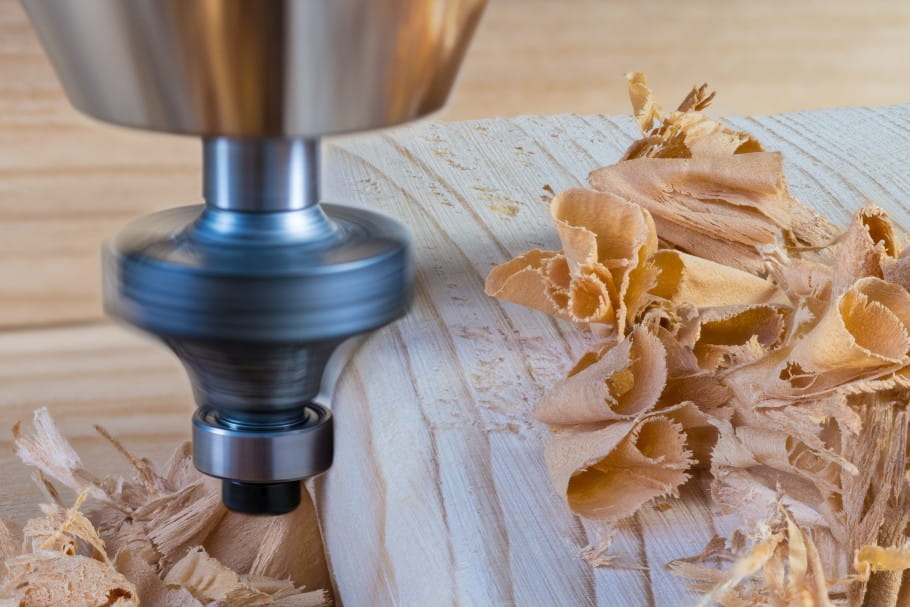
In our previous blog entry we gave a brief overview of routing machines and their various formats. In this entry we’ll turn our focus to routing cutters, or ‘bits’.
Much like a drill, which has the capacity to hold interchangeable drill bits, a router can hold all sorts of different bits. The kind of bit you install in your router will determine the sort of job you can do with it. Need to do a different job? Install a different bit!
Router bits come in all shapes and sizes, but are basically all the same kind of thing: a steel shaft with cutters that is designed to rotate very quickly (up to 20,000rpm!) against the workpiece, removing material in thin slices.
Shafts (or Shanks)
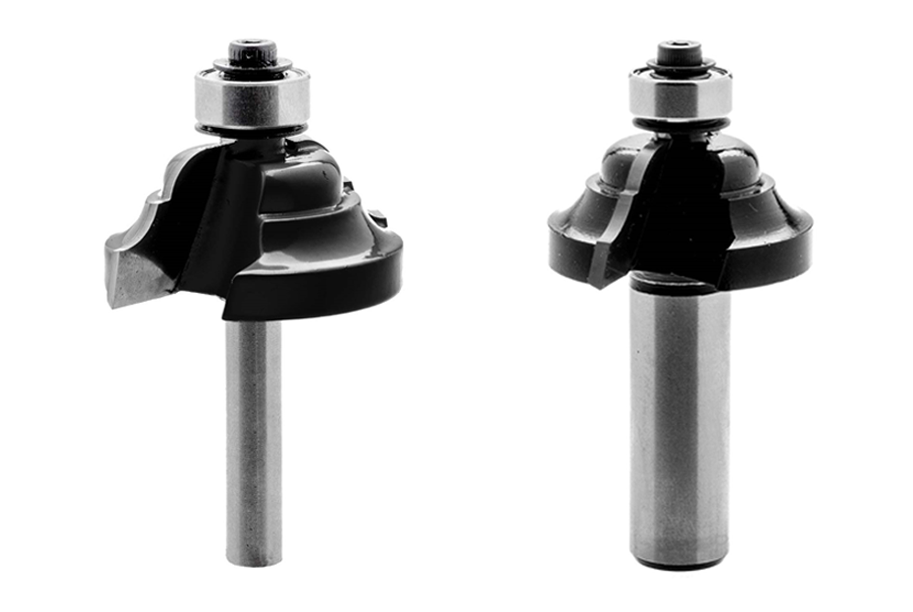 The shank of a router bit fits into the collet of a router. The collet holds the bit firmly while the motor rotates it. Collets do not have a wide size tolerance, so your bit’s shank needs to exactly match your collet for it to be held securely.
The shank of a router bit fits into the collet of a router. The collet holds the bit firmly while the motor rotates it. Collets do not have a wide size tolerance, so your bit’s shank needs to exactly match your collet for it to be held securely.
The most common collet sizes in Australia are 1/2in and 1/4in, and so router bits are also most commonly found in these two sizes. 1/4in bits tend to be used for smaller cuts, while 1/2in shanks are able to support larger cutter diameters. Check the collet size(s) on your router. Collets are interchangeable, so if your router came with a 1/2in collet you will usually be able to fit a 1/4in collet to it. However, for smaller routers there will be a limit to the size of collet that you can fit.
Cutters (or Blades)
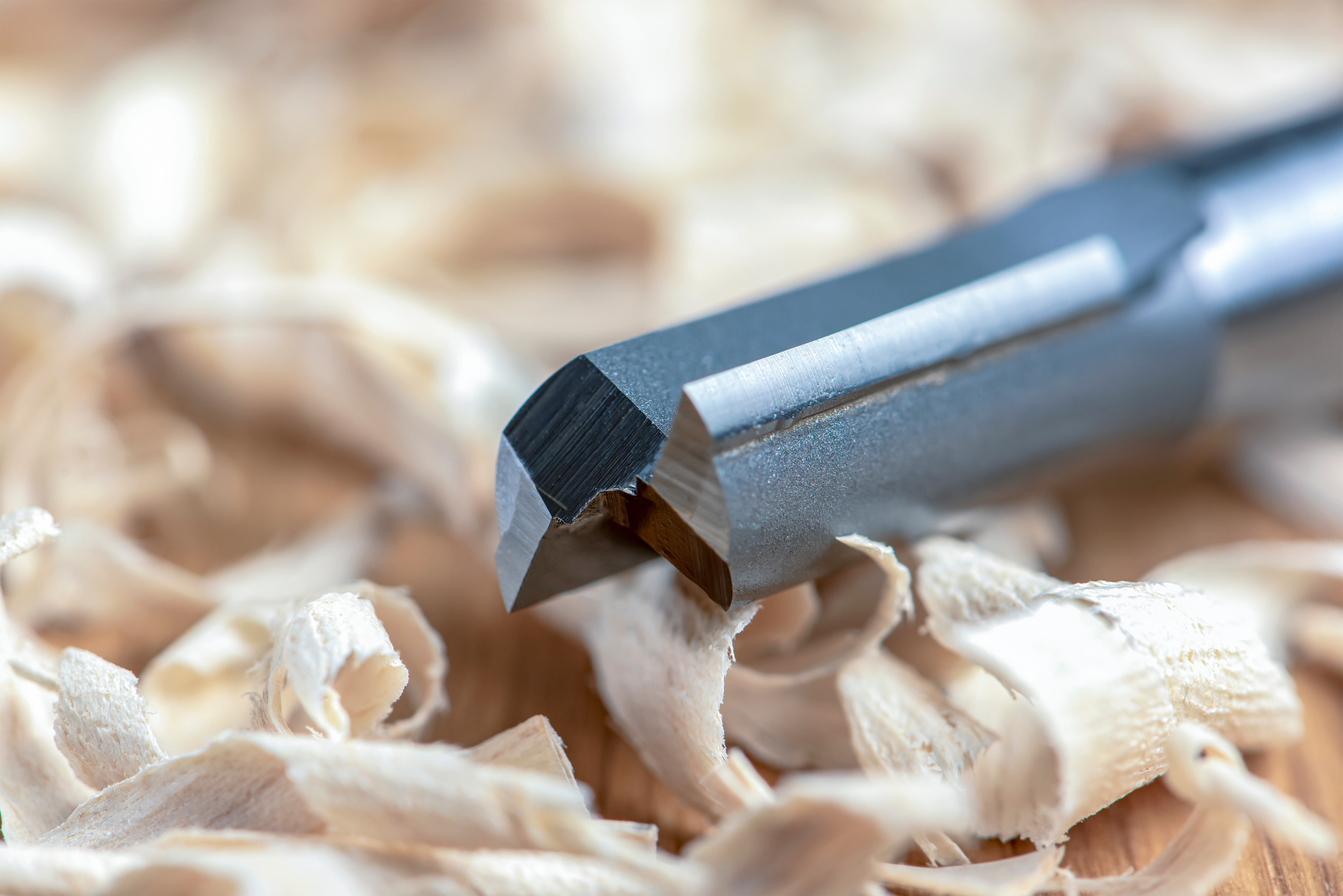 The cutter on a router bit is where the action happens; where the bit makes contact with the wood. Most cutters these days are made from tungsten carbide, which offers much longer life than the older high-speed steel cutters.
The cutter on a router bit is where the action happens; where the bit makes contact with the wood. Most cutters these days are made from tungsten carbide, which offers much longer life than the older high-speed steel cutters.
Fresh cutters are sharp, so be careful when handling your router bits! As the bit wears, the cutters will slowly become blunt. They can be sharpened, however since tungsten carbide is very hard, about the only thing that will effectively sharpen it is a diamond plate.
Shapes and Sizes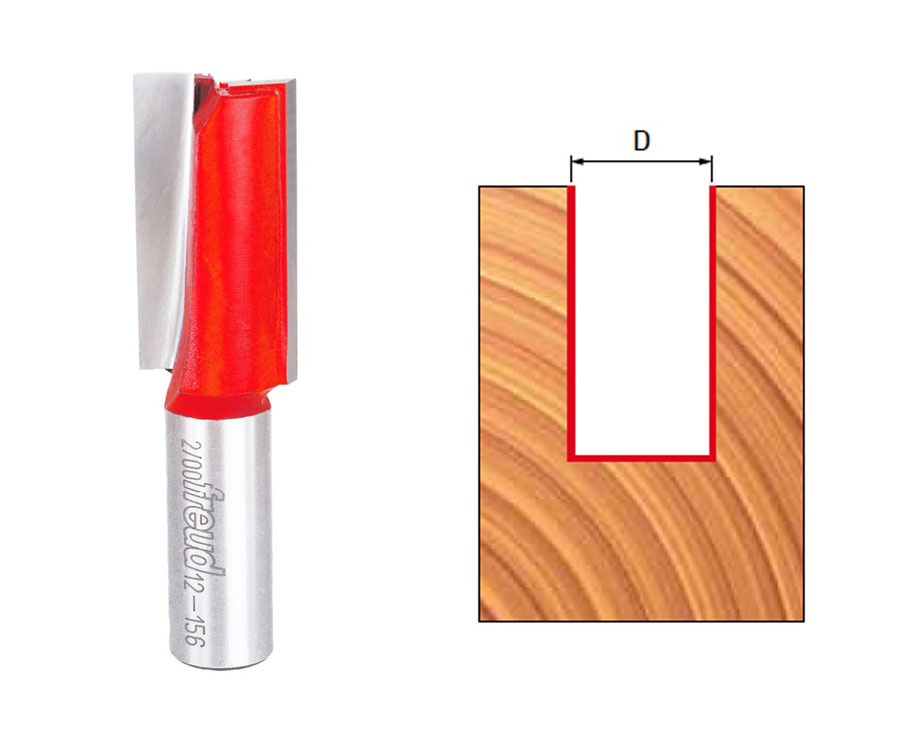
It may seem obvious to some, but it is worth emphasising that a router bit will leave a profile in the workpiece that is the exact inverse of its own shape.
For example, a straight bit will leave a rectangular cut in the timber with a width equal to the bit’s diameter, and a depth equal to the projection of the bit from the router’s base.
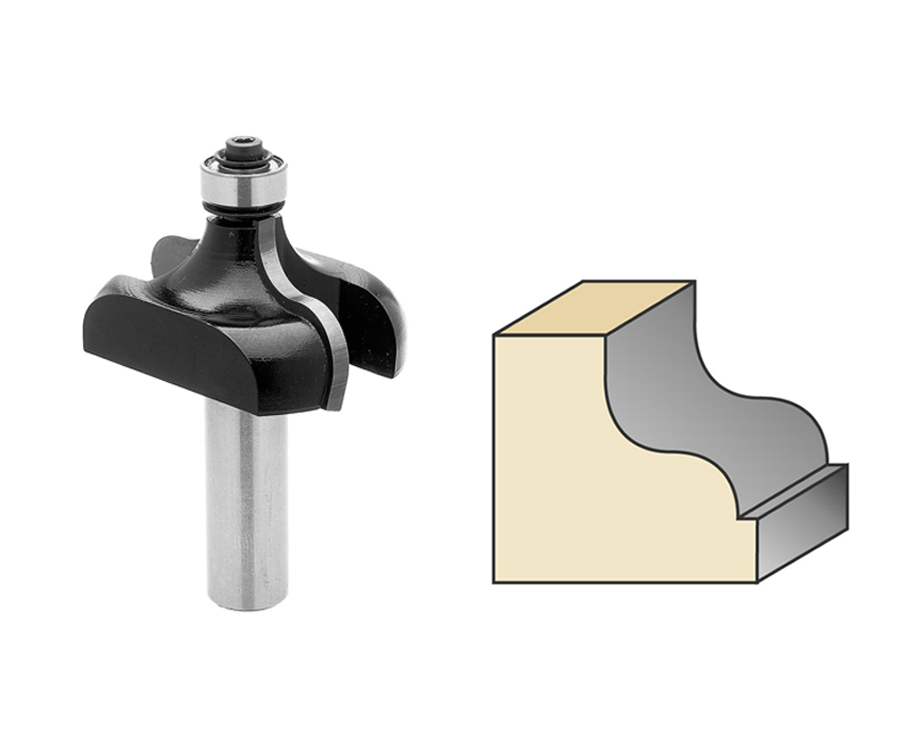
Adjusting the height on your router, or changing the position of the fence or size of the bearing, will alter the height and depth of the cut on your timber – altering the end shape that is produced.
And remember – the cut will always be symmetrical across the axis of the bit’s rotation!
Bearings
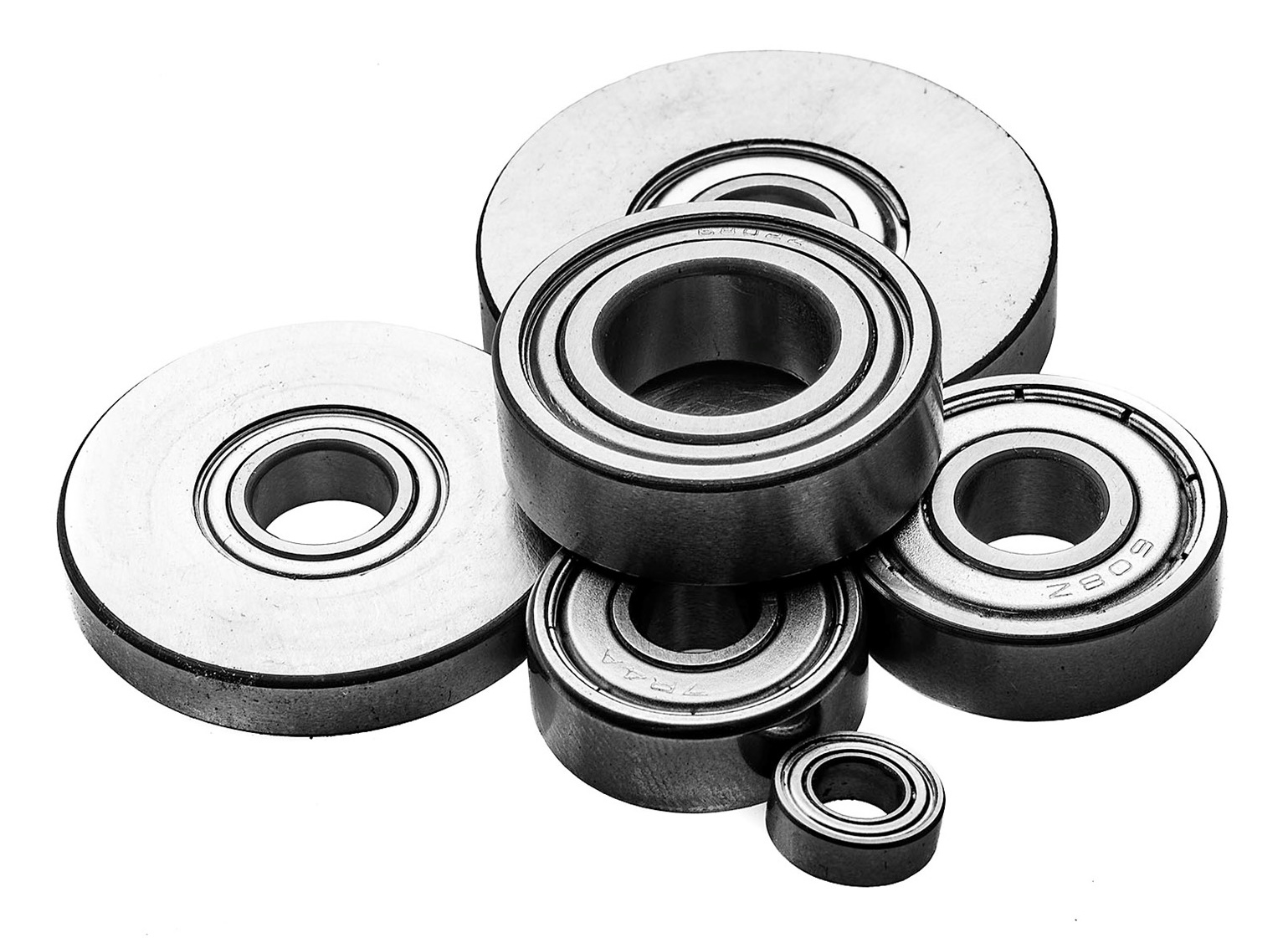
Many bits have bearings attached, either on the shaft end or the cutter end. The bearing acts as a limit to the movement of the bit into the timber. You can run the bearing along the edge of a template, or along part of the workpiece itself, to guide its cut. This is a very useful technique that can be used in all sort of situations, from producing multiple identical parts to making curved joinery. Check out this great explanation from Patrick here.
Spiral Bits
Spiral bits offer some advantages over standard bits. They cut the workpiece with a shearing action rather than a ‘chopping’ action and so they can be very useful in delicate materials where a standard bit can cause chips and untidy cuts (for example, laminates and soft end-grain pieces). Spiral bits can also offer improved chip ejection. However, they are more expensive than standard bits and are only available in straight profiles.
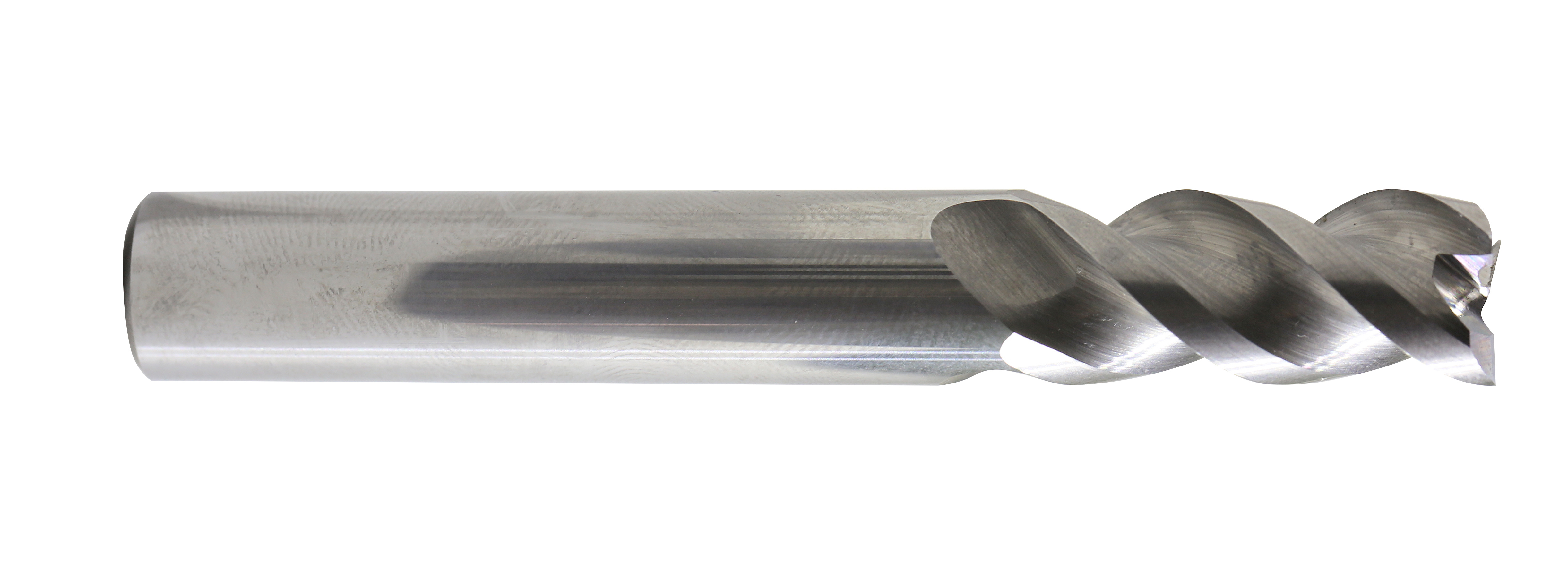
Spiral bits are available in Upcut, Downcut or Compression styles. Used in a handheld router, upcut bits eject the waste up towards the shank with a smoother edge on the bottom of the cut. Used in a table, upcut bits eject waste under the table with a smoother top edge.
The inverse is true for Downcut bits: used in a handheld router, the downcut bits ejects waste down with a smoother top edge where plunged. Used in a table, downcut bits eject wastes upward with a smoother bottom edge.
The combination of these two styles is found in the Compression spiral bits, which are designed with both up and downcut chip ejection, providing an excellent finish on both the upper and the lower side of the workpiece.
Once you've got the hang of how router bits work, using them in your next project will be sure to up the ease and efficiency in your workshop.
Shop Router Bits Now!